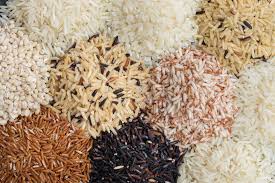Rice Imports Projected to Exceed One Million Metric Tons in 2025/26
Ghana’s rice imports are projected to surpass one million metric tons in the 2025/26 marketing year, covering more than half of national demand despite rising domestic production, according to the U.S. Department of Agriculture’s (USDA) 2025 Grain and Feed Annual Report.
The USDA estimates milled rice production at 900,000 metric tons, an 18 percent increase from the previous season, supported by favourable weather and improved farmer participation. However, the gains face risks, with the Ghana Meteorological Agency forecasting normal-to-below-normal rainfall and prolonged dry spells for 2025, raising concerns about crop sustainability.
Rice consumption is forecast to reach 1.80 million metric tons, up from 1.75 million metric tons, driven by population growth and changing dietary preferences. “Ghana’s urban population prefers fragrant long-grain rice, which is largely imported,” the report noted.
Price Trends and Import Dynamics
Between March 2024 and January 2025, the average price of a 100kg bag of rice surged from GH¢200 to GH¢650, a 225 percent rise, before easing to GH¢400 by March 2025 — still double the level a year earlier.
Import pricing also favours foreign suppliers. In early 2025, a 25kg bag of Thai fragrant rice averaged GH¢690, Vietnamese rice sold at GH¢490, while locally produced long-grain rice was priced at GH¢535.
Currently, 70 percent of rice sold in Ghana is imported, mainly from Vietnam, India, and Thailand, leaving local farmers struggling to compete on both cost and quality.
Structural Bottlenecks
The USDA flagged poor irrigation systems, low mechanisation, and weak processing capacity as key constraints undermining local rice competitiveness. It warned that unless these structural challenges are addressed, Ghana will remain heavily import-dependent, exposing consumers to global price shocks and exchange rate volatility.
Rice has now become Ghana’s second most important cereal after maize, with per capita consumption estimated at 51kg. While government initiatives such as the National School Feeding Programme have sought to boost demand for local rice, the USDA observed that “quality concerns, irregular supply, and distribution challenges continue to undermine competitiveness.”








